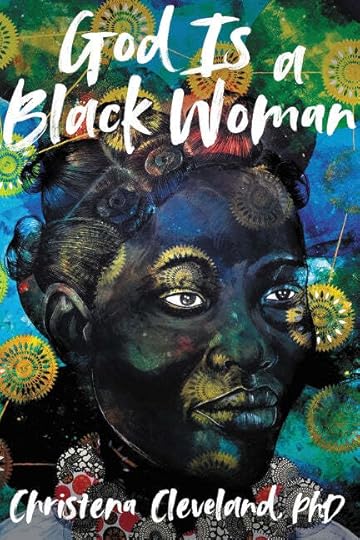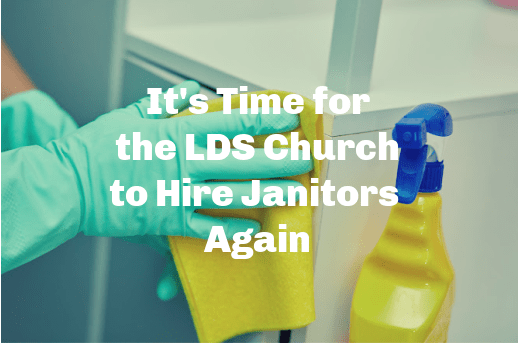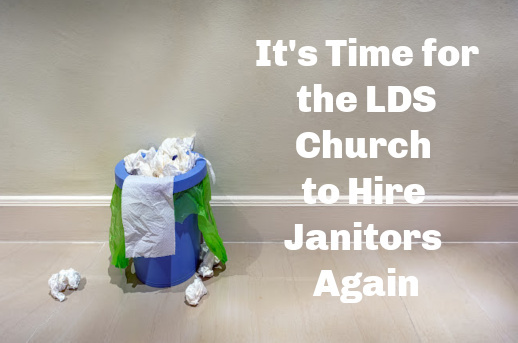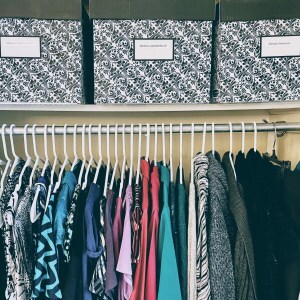Exponent II's Blog, page 119
February 26, 2022
Guest Post: A Girl in Charge
Guest post by Susannah Clarke Taylor. Susannah Clarke Taylor has degrees in English and Theatre and is a lover of all things family history, theatre, and books. She is the mother of three, including a daughter with Charge Syndrome and Lennox Gastaut Syndrome and she is a fierce advocate for disability rights and services. More of her writing can be found at www.thegirlincharge.com.
 There’s a strength that comes from listening to your child cry for hours on end
There’s a strength that comes from listening to your child cry for hours on end
Knowing there’s absolutely nothing you can do to help her
There’s a strength that comes from lifting a ten-year-old
In and out of bed
In and out of her feeding chair
In and out of the shower
In and out of her car seat
In and out of her stroller
There’s a strength that comes from managing the
Ophthalmologist
Cardiologist
Audiologist
Endocrinologist
Neurologist
Geneticist
Special Educator
Mobility Specialist
Physical therapist
Occupational therapist
Speech therapist
Hearing therapist
Vision therapist and
Feeding therapist
There’s a strength that comes from developing ninja-like reflexes to avoid
A scratch
A hit
A bite
A hair pull or
A kick in the face
There’s a strength that comes from
Loving a child with such intensity
You think it might actually burst your heart open
Knowing that that child
Could not live
If you did not do
What you have spent ten years
Developing the strength to do
And there’s a strength that comes
From accepting
That this is what the rest of your life will look like
And being at peace
100% okay with it
But not just okay with it
Profoundly grateful
Because without all of the personal sacrifice
You wouldn’t get to have her
Your darling girl
Your heart
Your soul
Your everything
But as that strength develops
Hour by hour
Day by day
Month by month
And year by year
You get to the point
Where you are no longer willing
To tolerate things
You have always tolerated
From the earliest moments of my childhood
I was taught
That it was my place in the world
To please…
To please my parents
To please my teachers
To please my religious leaders
To please my siblings
To please my neighbors
To please my friends
To please my husband
To please God
Please
Please
Please
And I was taught
That my Value
Depended upon
How successful I was
At doing that—
That sweet girls
Nice girls
Agreeable girls
Were the most valuable kind
So when I had an opinion that differed from somebody’s else’s
I buried it
When I had a goal that got in the way of what other people thought I should do
I buried it
When I had a feeling that might inconvenience someone I loved
I buried it
And the message was continually sent
That by burying
My thoughts
And feelings
And goals
And desires
And hopes
And dreams
That I was aligning my will with God’s
And earning my place in heaven
It was ingrained in me that
Humility
Submissiveness
Meekness
Long-suffering
Patience
Kindness
And turning the other cheek
Were the qualities that mattered–
The qualities that made a girl worthy
This pursuit of worthiness, and its sister message
“Your worth is conditional”
Shadowed my thinking for nearly four decades
But little by little these last ten years
As I have advocated for a little girl who could not advocate for herself
That shadow has shifted, and the
Revolution
Brewing in my Soul
Has surfaced
For the first time
I can see the truth staring me right in the face
And that is
That living my life focused on pleasing other people
Did not make me more Worthy
It made me more Vulnerable
To Men
Who were raised in a world built
By men
For men
Who claimed to Love me
But who didn’t know how Real Love behaved
And who believed that because I was a Woman
My job was to please
…and it is killing me…
Too often I have been told
That the Girl in Charge
Was sent to me
Because I was Special
But I have come to believe
With a conviction
More firm than words can express that
No, in fact, she was sent to me
Because I was broken
I was broken because I was taught that my Value
Depended upon what Men thought of Me
I was broken because deep down I believed that
I
Didn’t
Actually
Matter
That what I wanted
How I felt
What I needed
What I hoped for
What I desired
Was immaterial
My job was to please
I was
After all
Just a girl
For the past few years
I have been living in a place of in-between
Smiling on the outside
But dying on the inside
Trying to keep the peace for my kids
Trying not to rock the boat
But knowing I couldn’t go on like this forever
Everything on the outside has looked the same
But I am not the same…
And the time has come
I can no longer stay silent about the policies in my religious tradition that at the very least have propagated, if not promoted, the inequality of the sexes. I can no longer stay silent about men, who within that religious framework have been abusive and oppressive to their wives with zero accountability from the very leaders who claim to have the best interest of those women at heart.
I can no longer stay silent
The time has come for me to use my voice
To Speak Up
And Speak Out
For myself
And for my children
My family is broken
My religious tradition is broken
And they will not be whole until women are treated as equals
What caring for
The Girl in Charge
Has taught me these last ten years
Is that I don’t have to take it anymore
The way she demands Autonomy has transformed my thinking and given me permission to do the same
Watching A GIRL-
MY girl-
The Girl in Charge-
A Fierce Warrior Princess-
Unapologetically Own Her Own Worthiness
Has Healed My Soul
She has taught me that
My job is not to please
My worth is not conditional
My boundaries should not be crossed
My opinions are valid
My goals are important
My feelings do matter
My dreams are not an inconvenience
My voice should be heard
My existence makes me worthy
And that Like Her
I have
And have always had
The Right to Be
A Girl in Charge
February 25, 2022
Normalizing Repentance

My views on the world and issues I care about have changed greatly, especially in the past ten years. I used to eschew the term “feminist” because I didn’t consider myself a man-hater – and what else was a feminist? I consistently supported policy positions that undercut social justice efforts because I believed I knew better than the people most affected. I bought into a model minority myth that reinforced negative stereotypes about others and pitted my community against other people of color. I cringe now thinking about these and many other things I’ve said and done online and in real life.
I’m not interested in adding directly to the extensive discourse on wokeness and cancel culture. Like many vocal people on the Internet, I have been on both sides of this debate. I choose not to support those like J.K. Rowling whose works I otherwise might have passed onto the next generation or continued to reward financially with related purchases if not for her transphobia. At the same time, I defend Lin Manuel Miranda’s Hamilton musical as subversive in its own way, even if it’s not perfect – a decision that led to a small flame war in the #WritingCommunity on Twitter and resulted in at least one friend permanently blocking me. During the 2020 U.S. presidential election, I lost friends on both sides of the aisle for disagreeing on issues that matter to us. I don’t blame people for blocking and removing people from their circles (online or offline) who hurt them. It is a sacred exercise of each of our free agency to choose those around us.
What I would like to address is the frequent crossover from one thing (i.e., that an individual might separate themselves from another due to harm or even a simple desire to disassociate) to another (i.e., that someone is irredeemable). It is not a radical interpretation of the gospel to recognize this simple truth: everyone is redeemable. That does not mean harmed and affected people need to do the work of redeeming – quite the opposite. It is up to the person causing harm or abusing God’s children or hurting others with false teachings to repent. Nobody else, no matter how well meaning or loving, can do the hard work of repentance on their behalf. At the same time, we must leave space in our communities for repentance or none of us can eternally progress.
There is something corrupting in the soul about rejecting a culture of repentance. I was reminded of this as I learned about the many barriers to re-entering society that former prisoners in the United States and around the world are subjected to: reporting requirements on job applications, ineligibility for public benefits despite disproportionately coming from populations who would need it the most, and in some cases even disenfranchisement. Many of those who oppose lowering these barriers argue that criminals deserve to continue to be punished forever: they consider former prisoners irredeemable. No sentence or community service or repentance would be enough for some to see returning citizens as God sees them: precious children with a divine nature and eternal destiny who will be held accountable for their choices as we will be for ours.
There is no alternative to repentance because none of us, no matter how good, is perfect (Ecclesiastes 7:20; Moses 6:57; Romans 3:23; 1 John 1:8; Alma 42:29; Mosiah 26:28-32; Luke 13:3). Normalizing repentance for ourselves and others is one of the hardest things we are asked to do, but we must do it. Let’s strive to follow the Savior’s example in D&C 61:2: “I, the Lord, forgive sins, and am merciful unto those who confess their sins with humble hearts”. Through sincere repentance and forgiveness, we can sanctify ourselves and heal our families, communities, and nations.
February 24, 2022
Guest Post: Lighthearted Is Still Light: #ReconstructingFaith With Humor
Guest post by Eleanor Adams. Eleanor is a freelance writer, reluctant yogi, part-time van dweller, and much funnier in real life. Find her on her website, eleanorad.com.
Late last year, at the breaking point of my faith journey, I decided it was high time I got ordained.
It was past high time really, considering how every boy I knew had already done it at 12 years old. A girl like me, on the other hand? I was nearly 27 years old. I wasn’t ordained and had no prospects of ordination. My faith crisis was already a spiritual burden to my parents. And I was frightened.

Of course, as a woman, I could never be ordained in my first choice of religion, The Church of Jesus Christ of Latter-day Saints. Therefore, I did what any of us scrappy, Charlotte Lucas-types would do—I went with the next best available option. Or at least, the next easiest option.
So don’t you judge me, reader. Don’t you dare judge me.
The Latter-Day Dude
I’m proud(ish) to say that on October 26, 2021, I was officially ordained as a Priest in The Church of the Latter-Day Dude.
If, for some odd reason, you’ve never heard of it before, The Church of the Latter-Day Dude, which I will heretofore refer to as Dudeism (because adopting a colloquial nickname for a complicated moniker is actually a good idea) distinguishes itself as “the slowest-growing religion in the world.”
Derived from the Coen brother’s 1998 film, “The Big Lebowski,” Dudeism aims to embody the lifestyle of the eponymous character Jeffrey “The Dude” Lebowski. Core tenets include preaching non-preachiness, practicing as little as possible, and just taking it easy, man.
If I had to translate it into “real” theologic vernacular for the inquiring academic minds that want to know, Dudeism is a blend of Chinese Taoism and Epicureanism. Christians have Christ, Buddhists have the Buddha, and Dudeists have The Dude. Yes, for real.

If you haven’t seen the movie yet (it is rated R, after all), picture The Dude as your “cool” uncle who smokes a lot of weed, doesn’t have a real job, and couldn’t care less about what people think about him. He’s a deadbeat, but also a really nice guy.
The Dude Hath No Pavilion
My journey to Dudeism came after yet another anguished night of asking where the flip the big-ass pavilion was that hid God’s regard for women in the Church of Jesus Christ of Latter-day Saints. (Which I will heretofore refer to as CoJCoLDS, despite that acronym somehow triggering my trypophobia in addition to sounding very much like the part in Lord of the Rings when Sauron speaks the language of Mordor. You’re welcome, Russ.)
It’s a feeling I’d bet most women on a faith journey identify with: Where is my place here, awesome uterus and reproductive capabilities aside?
After all, if every single LDS woman died this instant, the CoJCoLDS wouldn’t need to change at all. Every *structural* place a woman holds, after you also remove all other women from the equation, can be taken up by a man. The foundation the Church organization is built on is undeniably a male one.

It really hit me then: No matter what I did, because of my sex, I would never be able to preside, bless, officiate, or contribute to how the Church was run or operated. Well, at least not officially. The message the Church structure embodied was loud and clear: Ladies, you aren’t needed here in any tangible, sanctioned way.
It was also around this time that I watched “The Big Lebowski” for the first time. I found Dudeism after a habitual Wikipedia deep dive on the film revealed the religion’s founding and mission. I discovered anyone—and I mean, anyone!—could be ordained as a Dudeist Priest. Right now. Today, even.
Could it really be so simple, I marveled? A quick Google search later, I was on https://dudeism.com/ordination-form/. The only requirement for ordination there? Your name, birthday, and checking a box next to a statement that reads: “I vow to uphold the principles of Dudeism: To just take it easy, to be dude (easygoing) to everyone I meet, and to keep my mind limber.”
Yep. That was truly it. I immediately knew I had to do it.
Then I paused. Would checking that little box and giving a random website my email address constitute apostasy? Couldn’t I technically be excommunicated for “joining” another religion? Was I trading my metaphorical CoJCoLDS birthright for a PDF version of metaphorical, Dude-ordination soup?!
Yet, I wanted this, I realized. I wanted to be ordained. Some part of me even needed to be ordained. Yes, partly as a joke for the delicious irony of it all. But also because I needed to feel integral to something in an official way, even if that something was a religion founded on doing nothing.
Two minutes later, I had my certificate of ordination and was proudly boasting to my husband and family how I was now a Priest. A Dudeist Priest, but a Priest nonetheless. Look out, world! I’m coming to officiate your wedding and I’ve already got a lot of bad jokes lined up.
Lighthearted Is Still Light
Turns out, making light of a question that had plagued me for years gave me more light—and laughs—than I had known in a long time. No, it didn’t heal the wound that faith deconstruction left in its wake. But it did light a spark of hope—a light at the end of the tunnel, if only a pinprick.
One day, I’d remember when I believed that getting ordained as a Dudeist Priest was my best option. One day, I’d be able to look back on this time in my life and laugh. One day, I’d have something real to be a part of in tangible, meaningful ways. And it may not be where I had initially hoped, but it would bring me joy. And maybe even a laugh or two.
After all, lighthearted is still light.
This post is part of the series, Reconstructing Faith. Find more from this series here.
February 23, 2022
Guest Post: Pele and Eve: A Re-Creation Story
Guest Post by Anonymous. Anonymous is a single woman in the church who recently vacationed in Hawai’i where she dreamed vividly of a sacred and healing encounter with the feminine divine.

I am in a garden. Night has fallen. I breathe deeply, hold the breath, and then exhale. Air rushes from my body, and, along with it, something more. I release until I become two-dimensional and begin sinking, concave, into the ground.
As I take in air again, the music around me gains momentum. Life force reanimates my lower lungs, upper lungs, the very tips of my extremities. I rise upward, brushing past a veil, almost by accident. Light erupts in blues and greens. All at once, I see her:
Mother in Heaven. Pele. The Feminine Divine.
I didn’t expect this.
She is glorious and good. She radiates with turquoise fire. She is singular and mighty. She is unmistakably female. And she is a Healer. I understand all of this in an instant. It overwhelms me. I cannot stare directly into the blue fire of her countenance. I fall backwards with a long, slow exhale, enveloped by the music.
The music calms, and I find myself submerged in a pool of glowing blue-green water under cover of night. The water is viscous and powerful—full of Mother’s movement and energy and Healing. All is peaceful. I float above my body and notice a small pool of this same water resting on my own torso. A single white plumeria bud floats at the center. Strangely, the rest of my body seems to be made of an earthy, black rock. My eyes are closed.
Parting the veil, Mother extends her hand. I cannot look into her face directly—I only see that blaze of blue and that powerful, gentle outstretched hand. She touches the pool of water on my torso with her finger, and I am pulled back into my body. She calls me to life. She touches me with Healing. Wherever Her light meets black rock, I am enlivened and restored. Her touch is infinitely tender, maternal, capable of delivering a warmth that settles deep and radiates outward.
The Healing is slow, deliberate. Mother touches my xyphoid process, and the tightness unwinds. She delivers energy to my neck, my chest, my lower abdomen. Some areas take much longer than others. Time spins in reverse as past traumas (however small) release and dissipate. One by one, She floods my energy centers with Her Healing power and, in that process, gifts me that same power too.
Deep within my core, I begin to sense something lost and something gained–the lightness of purification and the weightiness of endowment.
“Open your eyes.”
I look down. I am naked but not ashamed. My body has become a glowing entity of iridescent turquoise water. I am now, myself, a being pulsing with light and power and Healing. I am a manifestation of the feminine divine.
“Arise,” says Mother.
I obey.
I stand in the glowing pool and face Her, unable to see Her clearly but feeling Her presence vibrate in every particle around me. Turquoise fish move silently through the water. Other-worldly flora rises from the lake, translucent and glowing. They part to make way as I move through the water towards Mother in the semi-darkness, tears tracing both sides of my face. She asks, with great compassion,
“What do you want?”
Her voice isn’t so much a sound as a feeling.
“Please don’t leave me.” The tears continue.
“I won’t.” She waits a few moments. “What else?”
“I feel pain. Why do I still feel pain after the Healing?”
“Do not resist it; let it wash over you. Listen. What is it telling you?”
“It is telling me to feel.”
“What do you feel?”
“I feel loss.”
“Loss. Yes. We cannot hold everything. We must lose in order to gain.”
“There is more. I feel fear.”
“Look to the power that moves inside of you. It will show you possibility.”
“I feel frustration. This body. If I never give birth or nurse a child, why was I formed this way?”
“You were formed in MY image,” Mother replies, her voice both tender and terrible. The earth vibrates and her voice pierces. “Your body is a metaphor. You were born to create. You give life. You are full of Healing power.”
Suddenly, the iridescent water around me spins and rises, generating human forms who gravitate towards me, seeking energy and light, connected to one another through my power. I feel a deep sense of energy, purpose, and calm. The light grows.
“That is right.”
But is it enough?
“What else?” Mother asks.
“My. . .Other? Will I ever find them?”
The water-figures disappear. The energy calms. Mother falls silent for a moment.
“You do not need such a person. But if finding your Other is the desire of your heart, then you will.”
“How?”
“Look down. Do you see the place at your very core where you are still stone? Pluck it out. Give that stone to me.”
I obey, handing the stone at my core to Mother. It leaves behind a hole that the glowing water does not fill. I am suddenly very conscious of that hole.
Mother takes the stone in her hand and transforms it into a gem that glows inwardly with iridescent blue water-light, like a turquoise heart. I reach out to take the stone, ready to return it to my own body, but Mother stops me.
“This is not for you. Hold it. Keep it with you. Find the person missing this piece of themselves, and give them your stone. It will complete them. They will also bring a stone, and theirs will fill you as nothing else could. You will both be complete.”
“How?”
“Pain transformed by Healing is mighty—especially when shared with your Other.”
“Can you show me my Other?”
Mother shakes her head. “I cannot. But here is the feeling.”
All at once, I am approaching a third entity through a hazy, suspended mist. The shape and form shifts—sometimes clear, sometimes blurred, but always glowing with iridescent blue light. I extend my hand, and the form before me extends theirs. We meet, and Healing occurs. This is not frenetic, kinetic energy but a profound sense of oneness and connection. I am calm. Totally at peace. I exhale, and everything within and around me relaxes.
“That is right,” Mother says.
The images dissolve.
I turn to Mother again. “Don’t leave. I’ve been so lonely without you.”
She smiles.
“My child, I could never leave, even if I wanted to. Every place I have touched and Healed you has become me. I am in you. And you will take me and my Healing to others.”
I sit in silence, sensing the import of this calling. Mother is a Healer. I, too, must Heal.
“What if the Healing is undone? What if I return to stone?” I ask.
“We will repeat the Healing as often as it takes.”
The light begins to fade, and I feel myself being pulled away.
“Don’t leave!” I call out a third time. “How will I find you?”
The voice comes from a distance now, and the answer is simple: “Pray.”
Then She is gone, and I am left gazing upwards into the wide night sky, my tears still coursing two wet paths down each side of my face, my whole being unaccountably but profoundly transformed.
Standing slowly, I dry my tears and leave the garden, alone yet eternally connected.
February 22, 2022
Guest Post: Why Our Foundational Narrative is NOT SEXIST
Guest Post by Janeen

Our foundational narrative depicts an epic drama of good and evil that reveals truths about men, women, and their divine potential. While the literal meaning has great impact, too, there is much we can learn from the symbolism of this account. Much has been misinterpreted about it what it appears to be saying about gender and the inherent nature and roles of men and women, but I would like to set the record straight and show how, thanks to current light and knowledge, we can see divine patterns of partnership and equality.
The narrative begins in a spiritual staging, represented by a drab, black and white setting. There we find Dorothy, who represents us all. And by “us all” I, of course, mean “women”. Cosmic forces greater than she lead her to Oz, which is symbolic for Earth. The importance of family is stressed by the means in which she travels- a home. Truly, we all come to Earth through home and family. Although no men are depicted in this home as she travels, as she comes into Creation, it would be preposterous to assert that there were none. Men are an important part of creation. I mean, you cannot make a baby without a man- the thought makes reason stare!
Dorothy emerges in the lush and idyllic realm of Munchkin Land where she meets the Good Witch of the North (and the Wicked Witch of the East, deceased). Glinda, the Good Witch, is one of the witches who govern Oz. Thus, we see the divine mandate that gives women the authority to lead in our faith. This authority is passed on to Dorothy who becomes a leader to the men around her who look to her natural resourcefulness, bravery, and compassion. The Scarecrow, Tin Man, and Cowardly Lion are given to Dorothy to be her traveling companions and they learn to rely on Dorothy for the pieces of themselves they lack. Many faiths think this implies that all men are brainless, heartless, or spineless. Not so with our faith! We know that men are these things as a result of living in a fallen world, not merely because they are men! (In fact, once they return to Kansas at the end, we see them as whole beings with brains and hearts and spines taking their rightful places as farmhands on Dorothy’s farm). Dorothy, in turn, needs her companions to slow the plot down with their musical numbers. What a lovely pattern of complementarity! Consider the scene where they throw apples back at the trees- together they are defending the family! See how they compliment each other? And could Dorothy have defeated the Wicked Witch of the West without the Scarecrow’s help? No- his conflagration spurred Dorothy into action! Thus we see if men bear things in patience, pretty soon the women will notice and take action!
And while they are not the star of the story, men do have an equally valuable and important part to play. It is important to note how the Scarecrow governs Oz for a time in later books in the absence of a worthy female, and steps aside when one returns. It is not that men can’t lead, it just is not their role. Let’s look at Oz, the Great and Terrible. He usurps authority for himself, having rejected female authority, as seen in his dispute with the Wicked Witch of the West, and has unwittingly lead Oz down a dangerous path. He is revealed to be a bumbling charlatan. We see righteous models of male equality and partnership in in Dorothy’s supportive traveling companions and in the flying monkeys who submit to the will of their water-sensitive mistress. (Interesting tidbit- Dorothy’s traveling companions provide the model for the principle of polyandry practiced in the early days of our faith where individual women would wed three men).
This account blesses us with other righteous models of male leadership, too, such as the Lollipop Guild. As all-male auxiliary to the Lullaby League, they displayed excellent leadership skills over other men. Look at how their singing and dancing was an influence for good! (How nice of the Lullaby League to babysit their children so they could practice!)
Now, many meninists, who have no joy in their lives, complain because they feel like all this beautiful symbolism is a misuse of The Wizard of Oz- they claim that gender roles aren’t what it’s about and we shouldn’t use this account to proscribe them. Instead, they say, it’s a story about a girl who wishes for adventure, has one in a magical world, and then returns home more grateful for what she had. They also urge that, as we recognize the inherent divinity of all as image bearers of the Divine, we should allow men more leadership opportunities. But my husband and father don’t have a problem with any of this so clearly the meninists are wrong, and if they would repent they’d be happier.
I in no way see the divine role of men diminished just because they are supposed to be supportive traveling companions to their Dorothies. This is a glorious truth. And I have no doubt, that at some later date, it will be revealed that Glinda had a male companion traveling with her.
February 21, 2022
Women and the Priesthood is a Joke

Ordain Women at the Tabernacle Doors on Temple Square, October 2013. (Lots of jokes were made at the expense of these women.)

Ordain Women at the Marriot Center doors at Brigham Young University, October 2014. (I’m the one in this picture with the red shoes, and I overheard people laughing at us many, many times.)
Brad Wilcox’s now infamous Alpine, Utah fireside took the internet by storm two weeks ago, and I wrote my thoughts regarding his take on women and the priesthood RIGHT HERE, but there were so many problematic parts that it was impossible to cover everything in one blog post. Today I want to discuss the way women and girls with priesthood authority and power is too often considered one big hilarious joke by many men in the church. Brad talked about his kids playing church at home with their stuffed animals and joked, “I got a little nervous when my daughter started to bless the Sacrament”. He was clearly expecting a positive reaction from this one-liner, and from the audience’s chuckles you can tell that he got it.
Why though, is it so thoroughly absurd to men in positions of power in the church to imagine girls using priesthood power? The idea that Brad’s daughter would dare to even pretend to perform an ordinance was such a joke to him that he laughed out loud about it.
Years ago, I heard a podcast interview of a returned sister missionary who shared a story from her mission to a foreign country. This sister had always been a natural leader, good at the language and brave in front of investigators. She knew the gospel and the missionary discussions forward and back, and as such she stood out before long as one of the most effective missionaries in the area. In one particular area of her mission the church was new and fledgling, and missionaries were serving as temporary branch presidents until there was enough strength and experience in the membership to lead themselves. One day the elders in her mission decided to play a friendly prank on her and invited her into a priesthood leadership meeting at the church. With straight faces they told her, “Sister, as you know the branch here has been struggling and we’ve been asked to fill the role of branch president with one of our missionaries. The president has asked that this person be you.”
There was a pause while everyone waited for her response and she was momentarily confused. Then the other missionaries in the room broke out into laughter, letting her in on the joke. The woman on the podcast admitted that she laughed right along with them at the time. They were her friends and she felt like they were her peers, and in a way they were showing how much they respected her by even suggesting the idea.
The incident stuck with her though, and she thought to herself later, “Why is the idea of putting a woman in a leadership role so laughable that it’s an actual joke?” Hearing her experience struck a major chord in me at the time, because she was right. I understood at the same time why the joke was both funny *and* it was terrible that we as church members thought this way.
On the other hand, there are many churches out there that include women and girls equally at every level of church governance and ordinances, and to them it’s completely normal. In fact, when they see other churches that don’t fully include women it feels very wrong to them (which is probably how the woman at the conference confronting Brad Wilcox about women and the priesthood felt). In 2015 I experienced this firsthand when I spent a few Sundays visiting Saint Mary’s Episcopal Church in Provo, Utah. At the time I was longing for a church experience that ordained women and included them equally at every level. My husband was deployed to the Middle East that year and my calling was in cub scouts, so there was nothing that required I be physically in my ward during Sunday meetings. For the first time in my life (with three young kids in tow), I started taking Sunday field trips to other churches. Saint Mary’s was a small church, but full of lovely people. The Priest there was male, but just knowing that it could have been a woman meant a lot to me. After the services ended I stayed for their social hour and met a friendly woman (I will call her Jennifer) who introduced herself and asked me why I’d come that day.

Saint Mary’s Episcopal Church in Provo, Utah. (The church is even named after a female saint!)

Inside of Saint Mary’s, where congregants receive communion each week.
I told Jennifer that I was Mormon (we were still allowed to say that back then) and usually attended my ward in Lehi, but I’d wanted to experience a church where women were ordained. She was very kind and respectful of my beliefs, but also very open about her experience moving to Utah as a lifelong Episcopalian. She had two daughters, probably in the 8 to 12 year old range, and she told me that once a month they had a “Children’s Communion” (or something like that) where all the young people in the congregation would help administer their version of the Sacrament to the congregation. It was her daughters’ favorite meeting of the month, and they’d always looked forward to being allowed to participate when they were younger.
She said, “I was so surprised when I visited an LDS church for the first time and saw how segregated by gender the Sacrament services are. I can’t imagine telling my girls that they couldn’t give out communion just because they’re girls – but the boys still could. They would be so mad! Do the girls in your ward not complain about it all the time?” I said, “Honestly, no. I don’t think it occurs to most of us that it’s even an option because we’ve never seen it done any other way.”

This is a photo of the room where I sat at a table and talked to Jennifer, which I found online when I searched for images of Saint Mary’s. I also met a friendly man who called himself an “Episco-mormon”, because he’d attend both Elder’s Quorum in his home ward and Saint Mary’s with his Episcopalian wife on alternating Sundays.
Jennifer then shared with me a story from another outsider’s perspective. A Latter-day Saint neighbor had invited her family to their daughter’s baptism and they’d gone to support them, curious what an LDS baptism was like. About a week later Jennifer’s mom came to Utah to visit them, and hearing about their recent experience asked them to explain to her how the ordinance functioned. Jennifer said, “Well, the dad took the girl down into the font and baptized her. The two grandfathers stood on either side as witnesses. (This was before women could serve as witnesses.) The bishop talked to everyone while the little girl changed into dry clothes, and then the dad and a bunch of other men in the room – uncles, grandpas, her older brother, and some male friends – formed a circle around her and gave her a blessing”.
Jennifer’s mom asked, “What are the women doing during all of this? Like, just sitting there and watching?” My friend said, “Yeah, pretty much.” The mom threw her hands in the air and said, “And the women just put up with that?!”
I honestly felt a little embarrassed. Why *had* I always put up with that? Is this how everyone sees us from the outside? Are they pitying the women like me who don’t even know we’re being excluded from important events because we’ve been so sheltered our entire lives that we don’t realize that other women get so much more in their faith communities?
Brad Wilcox’s words brought back the memory of Jennifer and her mom, two women who (as far as I could tell) were very dedicated women of faith. They’d both experienced the LDS religion on one level or another and found it unappealing. Joining our church would mean walking back their (and their daughters’) participation in church significantly.
I honestly believe many women investigate The Church of Jesus Christ of Latter-day Saints but choose not to pursue it beyond a cursory glance because they aren’t comfortable with the gender inequality, and I know of at least one personally who did that. My Catholic neighbor was investigating the LDS church a few years ago, around the same time that President Nelson became the new prophet. She’d grown up in Utah and her husband was an inactive member, while her in-laws and extended family were all stalwart and faithful. She lived in a neighborhood full of Latter-day Saints, and her kids were already attending church with our ward semi-regularly. I saw the excitement from the ward missionaries and neighbors as she began taking the discussions, but then it mysteriously fizzled out and I never heard anything more about it. Imagine my surprise when I found myself at a McDonald’s Play place a couple years later with my Catholic neighbor and the topic of church came up while our daughters played together. She explained to me, “I was really enjoying the lessons, but… I come from a family with really strong women. My mom and my grandma are incredible matriarchs….” She trailed off, not sure how to explain what turned her off about the church without offending me. I said, “Oh my gosh, no – I TOTALLY UNDERSTAND! I had no idea you had an issue with this, too. I thought you were going to get baptized and think less of *me* because I’m feminist and frustrated with the church’s stance on women. And that’s the reason why you didn’t get baptized?! I thought you’d be fine with it because the Catholic church doesn’t ordain women either!” (It turns out that while Catholic women aren’t specifically ordained as priests, she still felt they had a much bigger role in Catholic worship than LDS women do in our church and home life.)
When Brad Wilcox talked about the non-LDS woman who approached him at a conference and suggested his church should give women the priesthood, he made her sound shrill, unreasonable and uneducated. His mocking tone made me think of Jennifer, her mom, and my Catholic neighbor. All of them would’ve said the exact same thing, and none of them could’ve possibly explained to his satisfaction exactly what the Latter-day priesthood was. That doesn’t make what they have to say invalid. My best guess is that the woman approaching him came from a faith tradition where she’d been fully included since childhood, and knowing that LDS women don’t receive the same experiences was frustrating to her. Well, I’m frustrated now, too! In the words of Jennifer’s mom, how long will the women in our church “just put up with it” before enough of us demand change, too?
February 20, 2022
Book Review: God is a Black Woman by Christena Cleveland

I have experienced and witnessed many Mormon women in stages of questioning their faith begin to search for Heavenly Mother, Mormonism’s feminine divine. We read Sue Monk Kidd’s Dance of the Dissident Daughter, inhale Heavenly Mother poetry in Rachel Hunt Steenblik’s I Gave Her a Name and Mother’s Milk, and search for a used copy of Carol Lynn Pearson’s Mother Wove the Morning. We experiment with addressing out prayers to Heavenly Mother or Heavenly Parents to see if that feels better than addressing Heavenly Father alone, desperate for answers to questions that we are beginning to form. And as we get into Heavenly Mother readings, we may also begin to worry about eternal polygamy. The cisgender, white, male, Heavenly Father that orders the Mormon universe infects our understanding of Heavenly Mother. For some of us, we do not find the liberation we are seeking in Her, just more hierarchical oppression.
Christena Cleveland’s book is both memoir and Womanist liberation theology. It tells stories from her pilgrimage to France to see Black Madonnas, images of the divine feminine that share her blackness. As she journeys and encounters these early medieval statues, she tells her readers what they mean to her and how they upend white male God’s distance (chapter 2), demands for perfection (chapter 3), and use of fear as a spiritual motivator (chapter 8). Instead, Cleveland describes the divine Black Mother as “She Cherishes Our Hot Mess” (chapter 5) and “She Whose Thick Thighs Save Lives” (chapter 7). For Cleveland, the divine Black Mother is with us in all of the challenges of life, meeting us precisely where we are, affirming LGBTQ+ identities, and never demanding more as a condition of love and grace.
While telling this story of pilgrimage and theology, Cleveland also talks about the ways in which imagining God as a white man hurt her family and their relationships to each other. One of the great strengths of this book is the author’s ability to name so many of the ways in which Christians have invested God with oppressive identities and behaviors that mirror our own social problems. Believing in this image of God reproduces the very harms we want our faith to overcome. By investing an image of God with multiple marginalized identities, Cleveland describes a God who can resist that earlier flawed image.
The one issue I had with the book was its use of the phrase “Judeo-Christian.” This language, created and used by Christians, imagines a cultural tradition in the United States that overstates the shared values of Christians and Jews while erasing Muslims and people from other religious traditions. Still, this book has much to offer readers, and particularly the Mormon feminist readers of this blog.
At an earlier stage of my faith transition, when I was starting to unpick the white supremacy in myself, I wondered what it would mean to me to imagine God as a Black woman. The specific face that came to my mind was that of actress Nichelle Nichols, who played Uhura in Star Trek: The Original Series. In my mind, Nichelle Nichols was not the young actress but the older woman who appeared in some of the Star Trek movies. I took comfort in the wisdom and courage that she represented as a Black woman in the public eye in the wake of the Civil Rights movement. I realized in this exercise that many of my faith challenges stemmed from an understanding of God that was hurting me and destroying my faith. I desired a more flexible space for thinking of God in different ways. Cleveland’s book was the one I needed seven years ago to help me in this work of re-imagining a more loving God.
February 19, 2022
We don’t need a quad revolution; we need a safer world for teen girls.
When 15-year-old Russian figure skater Kamila Valieva became the first woman to land a quad at the Olympics last week, it seemed like a victory for women.
But Valieva is not a woman, she is a girl.

Photo by Kelli McClintock on Unsplash
Any semblance of a victory for women evaporated when a positive doping test for Valieva came to light after she had competed and before her medal was awarded.* Who gave this child drugs?
The decision to allow Valieva to continue to skate in additional events despite the positive test because of her status as a minor raised questions about the fairness of the sport, not only for athletes of different ages, but of different races and ethnicities.
Gushing commentary about the “women’s quad revolution” was replaced by investigative journalism pointing out that only teen girls, not adult women, appear to be able to produce quads, which is creating incentives for adult coaches to unnaturally delay womanhood for their young charges through hormone therapies and anorexia, and/or to treat teen athletes as expendable products to be used up through abuse and injury and then replaced with younger models.
While most of this drama has focused on the Russian team, Americans like me must acknowledge that our own recent abuse scandals in Olympic gymnastics demonstrate the same issue. How did a sexual predator maintain a position of power over elite American teen athletes for so long? In part, because the athletes were so young and susceptible. They were also so talented and successful that Americans were unwilling to question the system that was exploiting them. We are complicit.
Girls’ bodies can do amazing things, but inside those bodies are children: children with a right to a safe childhood and to live out their potential to become healthy, adult women.
Citing women’s rights concerns, the Dutch Skating Federation proposed raising the age limit for women’s Olympic figure skating to 17 years old in 2018, and the issue gained momentum in 2020, due to the death by suicide of Australian skater Katia Alexandrovskaya. The proposal did not have enough support at the time, but the current fiasco is bringing the proposal to the forefront again. The Netherlands has also considered raising the minimum age for elite gymnastics to 18 in their own country, an effort that may be worth consideration at the Olympics as well.
Raising the age limit would come at a price. We might see fewer of the amazing Olympic feats that girls tend to achieve more readily than adult women. But what a girl’s body can do is less important than the girl who inhabits that body. Could we fans sacrifice the pleasure of watching a girl perform a quad because we value women more than the tricks their bodies can perform?
Olympians never cease to amaze, breaking the records of the athletes who proceeded them. I wouldn’t be surprised if someday, adult women figure skaters achieve quads. But in the meantime, we don’t need a quad revolution. We need a world with fewer incentives to abuse girls and greater respect for the women girls will eventually become.
*Not following the Olympics? Here’s a quick catch-up, mostly courtesy of the feminist facebook page, Women Hold Up Half the Sky.
February 7, 2022: “On Monday, the teenage elite athlete Kamila Valieva landed one of the hardest jumps in figure skating — a jump that is so difficult, no other woman had ever landed it at an Olympics before — then she did it a second time.”
February 14, 2022: “Sha’Carri Richardson — who was left off a U.S. Olympic team after a positive marijuana test — asked why Russian figure skater Kamila Valieva can compete after testing positive for a banned substance. ‘The only difference I see is I’m a black young lady.'”
Washington Post, February 14, 2022: “Tutberidze has a reputation for running an unforgiving and risky program that critics say drives to stardom and then discards teenage skaters, who have left the sport with severe injuries and reported lasting eating disorders.”
Eteri Tutberidze has helped revolutionize ladies figure skating.
— The Washington Post (@washingtonpost) February 15, 2022
But the doping controversy surrounding her latest star, 15-year-old Kamila Valieva, has put Tutberidze’s methods under an unwelcome spotlight. https://t.co/PGlfzuRzPa
February 16, 2022: “The doping case involving Russian figure skater Kamila Valieva has led to many more questions than answers. Some skaters think it’s time to ask another: Should a 15-year-old be in the Olympics at all?”
February 17, 2022: “Abuse”
PBS New Hour, February 18, 2022: “Raising the age limit, particularly to 18, would virtually eliminate the quad from senior-level competition. And without them in competition, coaches such as Tutberidze would no longer have incentive to push the young and developing bodies of their students to the point of physical breakdowns to learn them.”
One by one the Russian teen figure skaters took the ice for the free skate at the Beijing Games, and one by one they attempted the four-revolution jumps that are common in the men’s competition.
— PBS NewsHour (@NewsHour) February 18, 2022
Beijing may be the last Olympics any woman attempts a quad. https://t.co/gnwNZ143x8
It’s Time for the LDS Church to Hire Janitors Again
In a 1999 post on the churchofjesuschrist.org website, Bishop David Burton explains that, “Members of the Church are invited to participate in the cleaning of their buildings in such a way that, by their sacrifice, they will come to honor and respect and love these beautiful houses of worship.”
Bishop Burton insists, “The most important thing to understand is that this program was not primarily instituted to save money. This is a program to develop personal character and receive eternal blessings.”

When I was younger, I half believed/hoped this to be true. I used to volunteer–or be volunteered/assigned–to clean church buildings. We would pile our children into the mini-van on a Saturday morning after a long, exhausting week and meet up with another young family at the church. While our kids dusted/ran around the building, we hurriedly vacuumed and scrubbed, trying not to think of the piles of laundry and messy rooms waiting for us at home. We pretended not to watch the small window of Saturday we had together as a family shrink as we cleaned.
Sometimes, we waited until the evenings, so we could leave the kids with a babysitter and clean before going out on a double date. Our commitment was admirable and it’s probably true that I was the only one of the four harboring secret resentment about this task. I know I was the only one openly complaining about it.
I wasn’t then, nor am I now, above janitorial work. It isn’t the vacuuming and scrubbing itself that began to irk me. It’s the assumption that “The same opportunities to sacrifice for the kingdom do not exist today as they once did” (Burton). It’s the belief that this cleaning “opportunity” is a necessary spiritual one that members are not achieving as they simultaneously fill their spiritual cup/calendar with FHE, seminary, singles activities, primary/youth activities, family history work, temple attendance, family and individual scripture study, Come Follow Me lessons, feeding the missionaries, creating handouts for lessons, planning lessons, cleaning the temple, education, member missionary work, preparing for Sunday on Saturday, using Sunday as a day of rest, working one or more jobs during the week, parenting, home care, volunteering at school/in the community, attending meetings for callings, building up food storage, supervising homework, going on dates, building friendships, finding uninterrupted family time, etc…
Janitors should be hired to clean and preserve church buildings weekly, with members contributing in maintaining this cleanliness. The LDS church can afford to offer well-paying, desirable, respected janitorial positions. Respecting the buildings requires more deliberate, experienced, focused care then they are currently receiving.

Instead of the call to clean the building creating an increased respect, it is often another duty completed by a few and dreaded by many. In fact, how often are we assuming that it is someone else’s duty to clean that week/month, rather than a shared task? LDS church buildings are not maintained as they should be because of many factors, including lack of experience, lack of time, apathy, exhaustion, and over-commitment.
Members should show respect for the building by emptying trash, cleaning white boards, cleaning up after messes, and generally picking up after themselves. We should show church buildings regular care and take responsibility for our messes. We should do this and hire janitors. Wouldn’t it be better to know LDS buildings are professionally deep-cleaned and respectfully maintained by members? Wouldn’t it be better to create jobs that help individuals and communities and to have immaculate, well-maintained buildings?
February 18, 2022
Guest Post: Using the KonMari Method on Life and Faith #ReconstructingFaith
Guest Post by Sonrisa Hansen Parker enjoys deep one-on-one conversations, family time, and time alone to practice yoga, meditation, read, nap, and organize. She is an IBCLC, postpartum doula, and La Leche League Leader. She spent her childhood in Northern Utah and her adulthood in Chicagoland, where she resides with her husband and three growing children.

Ever since I can remember, I’ve loved to organize and tidy. It makes me happy to feel some control and have a neat space. My sister can attest to the tape line I put in the middle of our shared bedroom, in an attempt to keep my side orderly. When I discovered the KonMari method, it sparked joy in me immediately. Marie Kondo encourages her audience to hold up each item they own; if the item sparks joy, keep it, but if not, thank the item and let it go.
I grew up in a conservative, homeschooling, Mormon home and developed a solid faith in everything I thought a good Mormon girl should know and do, including fearing judgment and subconsciously burying my negative emotions. My parents rarely let themselves show a negative emotion, and that’s what I internalized. Looking back, I can identify that I had a lot of anxiety, and some depression, but at the time, I didn’t have the language to talk about it, and felt too anxious to reach out for help with any of it. I felt the scrutiny of people at church, one of the few places I had social interaction, since I was homeschooled. Some of the women and girls in my hometown were brutal with their judgments of each other, especially about clothing, and women working outside of the home.
I did all the things I had been taught. I got married in the temple at 20, graduated with a bachelor’s degree at 21, and began a family of my own at 22. I probably had peripartum depression, especially after a long distance move, but I really wasn’t in tune with my emotions, so I just kept struggling along. I made so many choices based on how I thought others would perceive me, including being a full time stay at home mom. I tried to be the perfect Mormon woman. The advice to enjoy every moment put a lot of pressure on me, because motherhood was supposed to bring me great joy and satisfaction. I had many good times with my kids, but also was stressed out and exhausted.
BAM! FAITH CRISIS!!!
At the time of my crisis of faith, I had struggled for six months as a Cub Scout den leader before I let myself feel and name my struggle. My eyes opened to the chasm between how men and women are treated in the church from a very young age. While those little privileged uniformed eight-year-old boys were wrestling on the floor of the room I was in, the girls in the room across the hall had a significantly smaller program, with leaders that weren’t given the resources or the autonomy to create opportunities for the girls. Once I saw it, I couldn’t unsee it. I thought back on my experience as a ten-year-old in the Merry Miss A class with an occasional activity like coloring a Family Home Evening lesson packet about the creation, while my brothers had their weekly scouting activities and monthly recognition meetings beginning at age eight. After that realization, I quickly became a feminist, and wondered what else feminists thought; luckily Mormon Feminism: Essential Writings had just come out, and I devoured the book.
My eyes were opened as I deconstructed my belief in the patriarchy; I began exploring other concepts that I had blindly believed. During the long and grueling process of deconstructing and reconstructing my life and faith, it is very useful for me to apply the KonMari method, by holding up each concept and asking myself if it sparks joy.
I have begun to see a KonMari mindset as a form of self care, making it easier to say yes to opportunities that will spark joy, as well as making it easier to say no thanks and set boundaries between myself and opportunities that will not spark joy.
Traditional gender roles did not spark joy. I had become very good at selflessness, and put my family ahead of myself. I became so selfless that I lost myself in service to my family. I had to find myself again, and discovered my passion. I set a goal to become an IBCLC (International Board Certified Lactation Consultant) by the age of 40, and recently achieved my goal with over a year to spare.
I have been working toward letting myself feel all of my feelings, instead of ignoring them like I had been conditioned to do. This is taking a lot of practice, therapy, meditation, and journaling. Having a few friends I can be vulnerable with has been crucial in this process.
My greatest fear was my perceived judgment by others. I realized that I had made many decisions based on what I thought people would think of me. My whole perspective shifted when I realized that probably no one actually cared, and if they did, that was their problem, not mine.
I have found so much joy and love in community with others who have struggles with their faith. I feel good when I pray and things seem to go better when I set intentions and act mindfully. I’ve reconstructed my thoughts and feelings about my beautiful body and my inherent worth. Giving and serving bring me joy.
I have thanked and let go of many things that no longer serve me. The pandemic has helped me discover that I like Sunday better when I don’t attend church. I let go of the duty and stress of a calling. I let go of scripture, and have been loving using Uplift Kids with my youngest instead.
While life can’t be as neat and tidy as I would like, I continue to KonMari what I have, letting go of what isn’t bringing me joy, and definitely keeping, embracing, and seeking what sparks joy.



